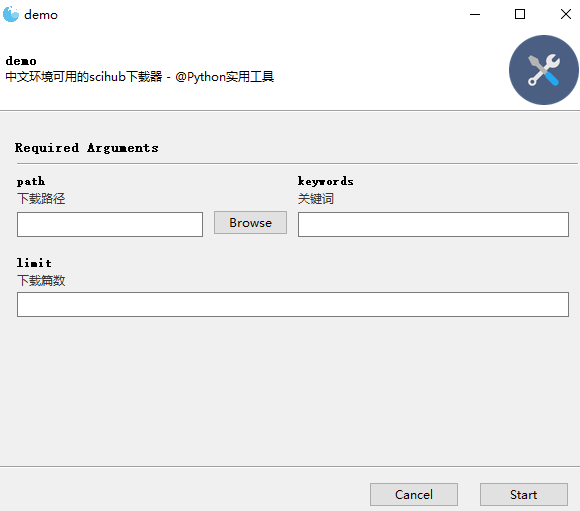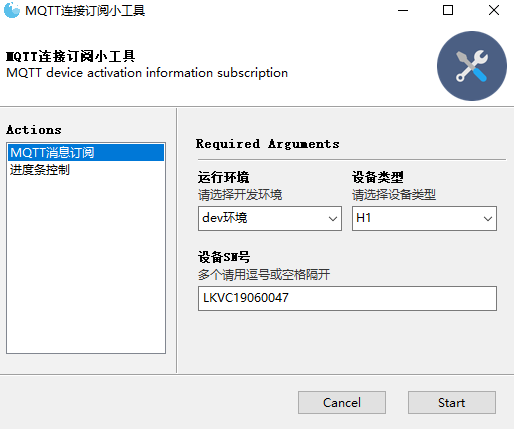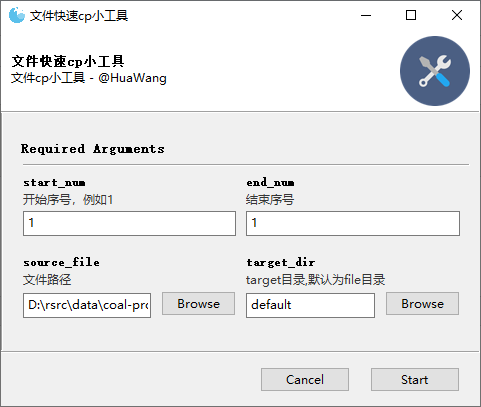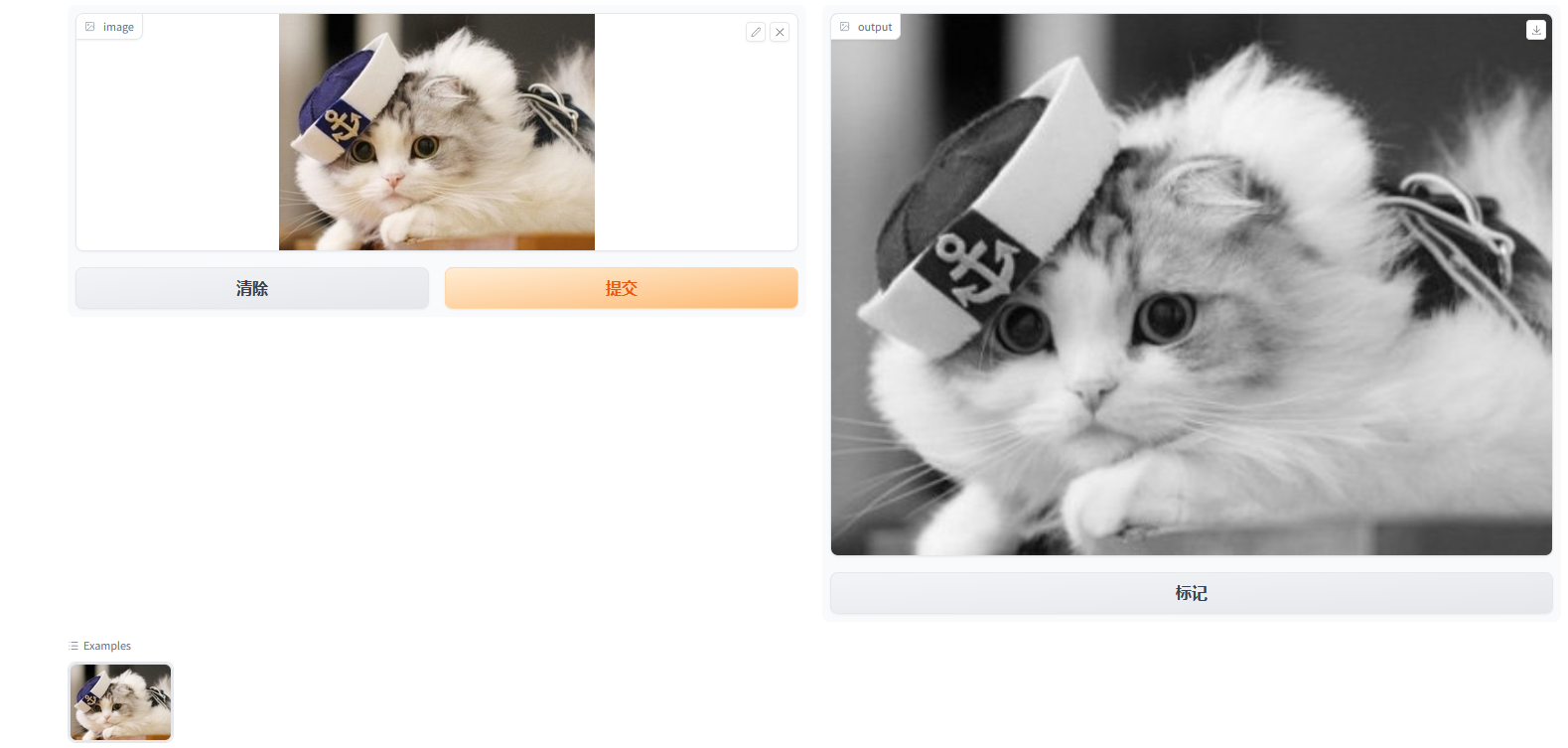python 实用库
python 实用库
1 抓屏

"""1 抓屏""" # from time import sleep # from PIL import ImageGrab # # m = int(input("请输入想抓屏几分钟:")) # m = m * 60 # n = 1 # while n < m/2: # sleep(0.02) # im = ImageGrab.grab() # local = (r"%s.jpg" % (n)) # im.save(local, 'jpeg') # n = n + 1
2 制作git图片

"""2 制作git图片""" from PIL import Image im = Image.open("1.jpg") images = [] images.append(Image.open('2.jpg')) images.append(Image.open('3.jpg')) im.save('gif.gif', save_all=True, append_images=images, loop=1, duration=1, comment=b"aaabb")
3 des加密(分组加密算法)

#!\Users\Local\Programs\Python37 # -*- coding: utf-8 -*- # pip install pycryptodomex # 导入DES模块 from Cryptodome.Cipher import DES import binascii # 这是密钥,此处需要将字符串转为字节 key = b'abcdefgh' # 需要去生成一个DES对象 def pad(text): """ # 加密函数,如果text不是8的倍数【加密文本text必须为8的倍数!】,那就补足为8的倍数 :param text: :return: """ while len(text) % 8 != 0: text += ' ' return text # 创建一个DES实例 des = DES.new(key, DES.MODE_ECB) text = "I'm china!" padded_text = pad(text) print(padded_text) # 加密 encrypted_text = des.encrypt(padded_text.encode("utf-8")) print(encrypted_text) # rstrip(' ')返回从字符串末尾删除所有字符串的字符串(默认空白字符)的副本 # 解密 plain_text = des.decrypt(encrypted_text).decode().rstrip(' ') print(plain_text)
4 情感分析

#!\Users\Local\Programs\Python37 # -*- coding: utf-8 -*- """ 百度飞浆官网:https://www.paddlepaddle.org.cn/install/quick 安装: pip install paddlepaddle -i https://mirror.baidu.com/pypi/simple pip install -i https://mirror.baidu.com/pypi/simple paddlehub""" import paddlehub as hub # 加载模型 senta = hub.Module(name="senta_lstm") # 待分类文本 test_test = [ "你的未来不是渺茫的", "《黑色四叶草》是部不错的番" ] # 情感分析 results = senta.sentiment_classify(data={"text": test_test}) # 得到结果 for result in results: print(result) # 结果展示: """ '你长得真好看', 'sentiment_label': 1, 'sentiment_key': 'positive', 'positive_probs': 0.9866, 'negative_probs': 0.0134} {'text': '《黑色四叶草》是部不错的番', 'sentiment_label': 1, 'sentiment_key': 'positive', 'positive_probs': 0.9401, 'negative_probs': 0.0599} """ # 1.sentiment_key 代表分类结果,postive是 积极 ,negative是 消极 。 # 2.sentiment_label 是分类结果标签,1代表 积极 ,0代表 消极 。 # 3. positive_probs 是积极分类的置信度,0.9866即模型判断98.66%的可能性是正面。 # 4. negative_probs 与 positive_probs 相对,是消极分类的置信度。
5 GUI图形化模块-Gooey
git参考:https://github.com/chriskiehl/Gooey
git示例参考:https://github.com/chriskiehl/GooeyExamples
示例一:


#!\Users\Local\Programs\Python37 # -*- coding: utf-8 -*- """ Gooey项目支持用一行代码将(几乎)任何Python 2或3控制台程序转换为GUI应用程序 1 安装:pip install Gooey 2 使用各种widget组件,逻辑编写 3 打包 """ import asyncio from scihub import SciHub from gooey import Gooey, GooeyParser def search(keywords: str, limit: int, path: str): """ 搜索相关论文并下载 Args: keywords (str): 关键词 limit (int): 篇数 path (str): 下载路径 """ pass # sh = SciHub() # result = sh.search(keywords, limit=limit) # print(result) # # loop = asyncio.get_event_loop() # # 获取所有需要下载的scihub直链 # tasks = [sh.async_get_direct_url(paper["url"]) for paper in result.get("papers", [])] # all_direct_urls = loop.run_until_complete(asyncio.gather(*tasks)) # print(all_direct_urls) # # # 下载所有论文 # loop.run_until_complete(sh.async_download(loop, all_direct_urls, path=path)) # loop.close() @Gooey def main(): """ #如果无widget参数,默认文本输入框,help--于提醒用户该选择器的作用 #支持的widget组件 1.勾选框 widget="CheckBox" 2.下拉框 widget="DropDown" 3.互斥选择框 widget="RadioGroup" 4.各种目标类型的选择框 文件选择框 widget="FileChooser" 目录选择框 widget="DirChooser" 多文件选择框 widget="MultiFileChooser" 文件保存目录 widget="FileSaver" 5.日期/时间选择器 widget="DateChooser/TimeChooser" 6.密码输入框 wiget="PasswordField" 7.多选列表框 widget="Listbox" 8.颜色选择器 widget="ColourChooser" 9.可过滤的下拉框 widget="FilterableDropdown" 10.滑片 widget="Slider" """ parser = GooeyParser(description="中文环境可用的scihub下载器 - @Python实用宝典") parser.add_argument('path', help="下载路径", widget="DirChooser") parser.add_argument('keywords', help="关键词") parser.add_argument('limit', help="下载篇数") args = parser.parse_args() #将用户输入的所有文本转化为对应对象的变量值,args.var 可提取对应的变量值 search(args.keywords, int(args.limit), args.path) print("下载成功了!!") main()
示例二:


from gooey import Gooey, GooeyParser @Gooey( richtext_controls=True, # 打开终端对颜色支持 program_name="MQTT连接订阅小工具", # 程序名称 encoding="utf-8", # 设置编码格式,打包的时候遇到问题 progress_regex=r"^progress: (\d+)%$" # 正则,用于模式化运行时进度信息 ) def main(): settings_msg = 'MQTT device activation information subscription' parser = GooeyParser(description=settings_msg) subs = parser.add_subparsers(help='commands', dest='command') my_parser = subs.add_parser('MQTT消息订阅') my_parser.add_argument("connect", metavar='运行环境',help="请选择开发环境",choices=['dev环境','staging环境'], default='dev环境') my_parser.add_argument("device_type",metavar='设备类型',help="请选择设备类型",choices=['H1','H3'],default='H1') my_parser.add_argument("serialNumber", metavar='设备SN号',default='LKVC19060047',help='多个请用逗号或空格隔开') siege_parser = subs.add_parser('进度条控制') siege_parser.add_argument('num',help='请输入数字',default=100) args = parser.parse_args() print(args, flush=True) # flush=True在打包的时候会用到 if __name__ == '__main__': main()
示例三:



#!\Users\Local\Programs\Python37 # -*- coding: utf-8 -*- # import cv2 from moviepy.editor import VideoFileClip from tqdm import tqdm from gooey import Gooey, GooeyParser def get_video_duration(video_path): """#获取video时长""" duration =VideoFileClip(video_path).duration return duration def extract_frames(video_path, out_folder, index, frame_rate,freq): """抽取视频帧""" total_time=get_video_duration(video_path) total_pic_num =int(total_time*frame_rate) pbar = tqdm(total=total_pic_num) video = cv2.VideoCapture(video_path) if not video.open(video_path): print("can not open the video") exit(1) count = 0 flag =True while flag: _, frame = video.read() if _: if count % freq == 0: save_path = "{}/{:>05d}.jpg".format(out_folder, index) cv2.imwrite(save_path, frame) index += 1 count += 1 pbar.update(1) print("",flush=True) else: flag =False video.release() pbar.close() print(f"提取{index}帧图片成功") @Gooey(program_name="video_to_pic小工具",encoding='cp936') def main(): base_path = r"D:\rsrc\data\coal-project" parser = GooeyParser(description="视频提取图片的小工具 - @HuaWang") parser.add_argument('frame_rate', help="视频帧速率,默认30帧/秒", default=30) parser.add_argument('index', help="开始序号,例如22", default=0) parser.add_argument('video_path', help="视频路径", widget="FileChooser",default=base_path) parser.add_argument('out_folder', help="图片路径", widget="DirChooser",default=base_path) parser.add_argument('freq', help="提取帧频率",choices=["30","60","90","120","240","360"],default="60") args = parser.parse_args() #将用户输入的所有文本转化为对应对象的变量值,args.var 可提取对应的变量值 extract_frames(args.video_path, args.out_folder,int(args.index),int(args.frame_rate),int(args.freq)) print("over!!!!!",flush=True) if __name__ == '__main__': main() # if __name__ == '__main__': # base_path =r"D:\rsrc\data\coal-project" # video_path = fr'{base_path}\belt\youshi\youshi-belt1.mp4' # out_folder = fr'{base_path}\belt\youshi\frames' # if not os.path.exists(out_folder): # os.makedirs(out_folder) # freq = 60 #要提取的图片 1帧/60帧 viedo:30帧/s # index =0 #开始序号 # frame_rate=30 #视频每秒帧数 # extract_frames(video_path, out_folder,index,frame_rate,freq)

from gooey import Gooey, GooeyParser import shutil import os def copy_files(satrt_num,end_number,source_file,target_dir): # target_dir =os.path.dirname(__file__) for i in range(satrt_num, end_number+1): file_name = "{:>05d}.txt".format(i) if target_dir=="default": target_dir = os.path.dirname(source_file) try: shutil.copy(source_file, fr"{target_dir}\{file_name}") except Exception as e: print("copy{:>05d}.txt失败,reason:".format(i), e) print("恭喜你,复制文件{:>05d}.txt-{:>05d}.txt成功!".format(satrt_num,end_number)) @Gooey(program_name="文件快速cp小工具",encoding='cp936') def main(): base_path = r"D:\rsrc\data\coal-project" parser = GooeyParser(description="文件cp小工具 - @HuaWang") parser.add_argument('start_num', help="开始序号,例如1", default=1) parser.add_argument('end_num', help="结束序号", default=1) parser.add_argument('source_file', help="文件路径", widget="FileChooser",default=base_path) parser.add_argument('target_dir', help="target目录,默认为file目录", widget="DirChooser",default ="default") args = parser.parse_args() #将用户输入的所有文本转化为对应对象的变量值,args.var 可提取对应的变量值 copy_files(int(args.start_num), int(args.end_num),args.source_file,args.target_dir) print("over!!!!!",flush=True) if __name__ == '__main__': main()
6 GUI自动化
GUI自动化就是写程序直接控制键盘和鼠标

#1 example:让我们用 Python 自动化在文件编辑窗口中输入 Helloworld!。首先,打开一个新的文件编辑窗口,将它放在屏幕的左上角,以便pyautogui 点击正确的位置,让它获得焦点 import pyautogui import time time.sleep(2) pyautogui.click(300, 300) time.sleep(2) pyautogui.typewrite('Hello world!',interval=0.25) #2 press 按下键盘 import pyautogui import time time.sleep(2) pyautogui.click(300, 300) time.sleep(2) pyautogui.typewrite('Hello world!',interval=0.25) time.sleep(1) pyautogui.press('enter') time.sleep(2) pyautogui.typewrite('Hello world!',interval=0.25) #3 按下和释放键盘 import pyautogui import time time.sleep(2) pyautogui.keyDown('shift') pyautogui.press('4') pyautogui.keyUp('shift') # 4 ctrl-v import pyautogui import time time.sleep(2) pyautogui.hotkey('command', 'v')

# 安装:pip install pyautogui #1获取电脑屏幕的宽和高的像素数 import pyautogui width, height = pyautogui.size() print(width,height) # 2移动鼠标 import pyautogui for i in range(5): pyautogui.moveTo(100, 100, duration=0.25) pyautogui.moveTo(200, 100, duration=0.25) pyautogui.moveTo(200, 200, duration=0.25) pyautogui.moveTo(100, 200, duration=0.25) # 3 基于当前位置移动鼠标 import pyautogui for i in range(5): pyautogui.moveRel(100, 0, duration=0.25) pyautogui.moveRel(0, 100, duration=0.25) pyautogui.moveRel(-100, 0, duration=0.25) pyautogui.moveRel(0, -100, duration=0.25) # 4 获取当前鼠标位置 pyautogui.position() # 5 控制鼠标交互 #5.1实现:鼠标移到屏幕左上角的位置,并点击一次。完整的“点击”是指按下鼠标按键,然后放开,同时不移动位置 import pyautogui pyautogui.click(10, 5) #5.2 指定鼠标按键 import pyautogui pyautogui.click(600, 509,button='right') """ - 实现点击的其他方法 - pyautogui. mouseDown() - 只是按下鼠标按键 - pyautogui.mouseUp() - 只是释放鼠标按键 - pyautogui.doubleClick() - 执行双击鼠标左键 - pyautogui.rightClick(),pyautogui.middleClick() - 分别执行双击右键和双击中键 """ # 5.3 拖动鼠标 import pyautogui, time time.sleep(2) pyautogui.click() distance = 200 while distance > 0: pyautogui.dragRel(distance, 0, duration=0.2,button='left') # move right distance = distance - 5 pyautogui.dragRel(0, distance, duration=0.2,button='left') # move down pyautogui.dragRel(-distance, 0, duration=0.2,button='left') # move left distance = distance - 5 pyautogui.dragRel(0, -distance, duration=0.2,button='left') # move up # 5.4 滚动鼠标 import pyautogui, time time.sleep(2) pyautogui.scroll(-300) #正整数向上滚动,负整数向下滚动 # 6 处理屏幕 # 6.1 获取屏幕快照 import pyautogui im = pyautogui.screenshot() im.save('./123.png') # 6.2 分析屏幕快照 import pyautogui im = pyautogui.screenshot() print(im.getpixel((500, 200))) result = pyautogui.pixelMatchesColor(300, 200, (248, 248, 248)) print(result) #如果屏幕上指定的 x、y 坐标处的像素与指定的颜色匹配,PyAutoGUI 的pixelMatchesColor() 函数将返回 True

""" pip install opencv-python==3.4.5.20 - 操作 - 打开腾讯会议,识别【加入会议】按钮,对其进行点击操作 """ import cv2 import pyautogui import time time.sleep(2) #获取带有腾讯会议的屏幕快照且保存到本地 im = pyautogui.screenshot() im.save('screen.png') #基于cv2读取照片 screen = cv2.imread('./screen.png') joinMeeting = cv2.imread('./joinMeeting.png') #在屏幕快照中对比加入会议按钮照片,定位其准确位置 result = cv2.matchTemplate(joinMeeting,screen, cv2.TM_CCOEFF_NORMED) #result是一个二维列表,列表中最大值元素的位置就是我们对比后相似度最高的图片【最上角】位置 print(result) #minMaxLoc返回一个元组,其中三个元素,以此为最不相似点分数,最相似点分数,最不相似点位置坐标,最相似点位置坐标 pos_start = cv2.minMaxLoc(result)[3] #获取最相似点相似坐标 print(pos_start) # x = pos_start[0] # y = pos_start[1] #定位到点击图片的中间位置 x = int(pos_start[0]) + int(joinMeeting.shape[1] / 2) y = int(pos_start[1]) + int(joinMeeting.shape[0] / 2) time.sleep(1) pyautogui.click(x,y)

import cv2 import os import pyperclip #用于复制粘贴的模块 import pyautogui import time time.sleep(2) #从屏幕screen中找到source的位置坐标(找到微信搜索框的位置) def findImg(): im = pyautogui.screenshot() im.save('screen.png') screen = cv2.imread('./screen.png') joinMeeting = cv2.imread('./wechat.png') result = cv2.matchTemplate(joinMeeting,screen, cv2.TM_CCOEFF_NORMED) pos_start = cv2.minMaxLoc(result)[3] #获取最相似点相似坐标 x = int(pos_start[0]) + int(joinMeeting.shape[1] / 2) y = int(pos_start[1]) + int(joinMeeting.shape[0] / 2) return x,y #向搜索框中录入要查找的好友名称:name好友名称,x,y搜索框位置 def send_name_to_search(x,y,name): pyautogui.click(x,y) time.sleep(1) #赋值好友名称 pyperclip.copy(name) #粘贴复制内容 pyautogui.hotkey('command', 'v') time.sleep(1) pyautogui.hotkey('enter') #向下移动100个像素定位到搜索到第一个好友位置点击 # pyautogui.moveTo(x, y+80) # pyautogui.click(x, y+80) #向好友发送消息 def send_msg(msg): pyperclip.copy(msg) pyautogui.hotkey('command', 'v') pyautogui.hotkey('enter') #主要程序 x,y = findImg() send_name_to_search(x,y,'传输') send_msg('i love learn Python!!!') time.sleep(1) send_msg('i love learn Python!!!') time.sleep(1) send_name_to_search(x,y,'站山') send_msg('GUI测试,无需理会') time.sleep(1) send_msg('GUI测试,无需理会')

import pyautogui import cv2 import yagmail import schedule import time def run(): print('开始监视......') #截取屏幕图片 myScreenshot = pyautogui.screenshot() myScreenshot.save(r'screen.png') #基于cv2打开电脑摄像头,捕获实施照片 cap = cv2.VideoCapture(0) ret, frame = cap.read() time.sleep(3) cv2.imwrite('photo.jpg', frame) #关闭摄像头 cap.release() received = ['zhangxiaobo@oldboyedu.com'] yag = yagmail.SMTP(user='328410948@qq.com', host='smtp.qq.com') contents = ['<b> <font color="#FF1493" size="10"> Bobo大人您好,一切都在监视中,尽情放心!</font> </b>', "screen.png", 'photo.jpg' ] yag.send(received, '来自小鬼侦探的报告', contents) schedule.every().minute.at(":30").do(run) while True: schedule.run_pending() time.sleep(5)
pyautogui自动化:

""" pyautogui库的最全使用方法 参考文章:https://cloud.tencent.com/developer/article/1741066 """ ## 1常用操作 import pyautogui pyautogui.PAUSE = 1 # 调用在执行动作后暂停的秒数,只能在执行一些pyautogui动作后才能使用,建议用time.sleep pyautogui.FAILSAFE = True # 启用自动防故障功能,左上角的坐标为(0,0),将鼠标移到屏幕的左上角,来抛出failSafeException异常 # 判断(x,y)是否在屏幕上 x, y = 122, 244 flag=pyautogui.onScreen(x, y) # 结果为true print(flag) width, height = pyautogui.size() # 屏幕的宽度和高度 print(width, height) # 2鼠标操作 import pyautogui currentMouseX, currentMouseY = pyautogui.position() # 鼠标当前位置 print(currentMouseX, currentMouseY) # 控制鼠标移动,duration为持续时间 for i in range(2): pyautogui.moveTo(100, 100, duration=0.25) # 移动到 (100,100) pyautogui.moveTo(200, 100, duration=0.25) pyautogui.moveTo(200, 200, duration=0.25) pyautogui.moveTo(100, 200, duration=0.25) pyautogui.moveRel(50, 0, duration=0.25) # 从当前位置右移100像素 pyautogui.moveRel(0, 50, duration=0.25) # 向下 pyautogui.moveRel(-50, 0, duration=0.25) # 向左 pyautogui.moveRel(0, -50, duration=0.25) # 向上 # 按住鼠标左键,把鼠标拖拽到(100, 200)位置 pyautogui.dragTo(100, 200, button='left') # 按住鼠标左键,用2秒钟把鼠标拖拽到(300, 400)位置 pyautogui.dragTo(300, 400, 2, button='left') # 按住鼠标左键,用0.2秒钟把鼠标向上拖拽 pyautogui.dragRel(0, -60, duration=0.2) # pyautogui.click(x=moveToX, y=moveToY, clicks=num_of_clicks, interval=secs_between_clicks, button='left') # 其中,button属性可以设置成left,middle和right。 pyautogui.click(10, 20, 2, 0.25, button='left') pyautogui.click(x=100, y=200, duration=2) # 先移动到(100, 200)再单击 pyautogui.click() # 鼠标当前位置点击一下 pyautogui.doubleClick() # 鼠标当前位置左击两下 pyautogui.doubleClick(x=100, y=150, button="left") # 鼠标在(100,150)位置左击两下 pyautogui.tripleClick() # 鼠标当前位置左击三下 pyautogui.mouseDown() # 鼠标左键按下再松开 pyautogui.mouseUp() pyautogui.mouseDown(button='right') # 按下鼠标右键 pyautogui.mouseUp(button='right', x=100, y=200) # 移动到(100, 200)位置,然后松开鼠标右键 # scroll函数控制鼠标滚轮的滚动,amount_to_scroll参数表示滚动的格数。正数则页面向上滚动,负数则向下滚动 # pyautogui.scroll(clicks=amount_to_scroll, x=moveToX, y=moveToY) pyautogui.scroll(5, 20, 2) pyautogui.scroll(10) # 向上滚动10格 pyautogui.scroll(-10) # 向下滚动10格 pyautogui.scroll(10, x=100, y=100) # 移动到(100, 100)位置再向上滚动10格 # 缓动/渐变函数可以改变光标移动过程的速度和方向。通常鼠标是匀速直线运动,这就是线性缓动/渐变函数。 # PyAutoGUI有30种缓动/渐变函数,可以通过pyautogui.ease*?查看。 # 开始很慢,不断加速 pyautogui.moveTo(100, 100, 2, pyautogui.easeInQuad) # 开始很快,不断减速 pyautogui.moveTo(100, 100, 2, pyautogui.easeOutQuad) # 开始和结束都快,中间比较慢 pyautogui.moveTo(100, 100, 2, pyautogui.easeInOutQuad) # 一步一徘徊前进 pyautogui.moveTo(100, 100, 2, pyautogui.easeInBounce) # 徘徊幅度更大,甚至超过起点和终点 pyautogui.moveTo(100, 100, 2, pyautogui.easeInElastic) # 3获取鼠标在屏幕中的位置 # 案例获取鼠标的位置,方便复制我们定位的鼠标坐标点到代码中 import pyautogui import time # 获取鼠标位置 def get_mouse_positon(): time.sleep(5) # 准备时间 print('开始获取鼠标位置') try: for i in range(10): # Get and print the mouse coordinates. x, y = pyautogui.position() positionStr = '鼠标坐标点(X,Y)为:{},{}'.format(str(x).rjust(4), str(y).rjust(4)) pix = pyautogui.screenshot().getpixel((x, y)) # 获取鼠标所在屏幕点的RGB颜色 positionStr += ' RGB:(' + str(pix[0]).rjust(3) + ',' + str(pix[1]).rjust(3) + ',' + str(pix[2]).rjust( 3) + ')' print(positionStr) time.sleep(0.5) # 停顿时间 except: print('获取鼠标位置失败') ## 4 键盘操作 import pyautogui pyautogui.typewrite('Hello world!') # 输入Hello world!字符串 pyautogui.typewrite('Hello world!', interval=0.25) # 每次输入间隔0.25秒,输入Hello world! pyautogui.press('enter') # 按下并松开(轻敲)回车键 pyautogui.press(['left', 'left', 'left', 'left']) # 按下并松开(轻敲)四下左方向键 pyautogui.keyDown('shift') # 按下`shift`键 pyautogui.keyUp('shift') # 松开`shift`键 pyautogui.keyDown('shift') pyautogui.press('4') pyautogui.keyUp('shift') # 输出 $ 符号的按键 pyautogui.hotkey('ctrl', 'v') # 组合按键(Ctrl+V),粘贴功能,按下并松开'ctrl'和'v'按键 # pyautogui.KEYBOARD_KEYS数组中就是press(),keyDown(),keyUp()和hotkey()函数可以输入的按键名称 pyautogui.KEYBOARD_KEYS = ['\t', '\n', '\r', ' ', '!', '"', '#', '$', '%', '&', "'", '(', ')', '*', '+', ',', '-', '.', '/', '0', '1', '2', '3', '4', '5', '6', '7', '8', '9', ':', ';', '<', '=', ' ', '?', '@', '[', '\\', ']', '^', '_', '`', 'a', 'b', 'c', 'd', 'e', 'f', 'g', 'h', 'i', 'j', 'k', 'l', 'm', 'n', 'o', 'p', 'q', 'r', 's', 't', 'u', 'v', 'w', 'x', 'y', 'z', '{', '|', '}', '~', 'accept', 'add', 'alt', 'altleft', 'altright', 'apps', 'backspace', 'browserback', 'browserfavorites', 'browserforward', 'browserhome', 'browserrefresh', 'browsersearch', 'browserstop', 'capslock', 'clear', 'convert', 'ctrl', 'ctrlleft', 'ctrlright', 'decimal', 'del', 'delete', 'divide', 'down', 'end', 'enter', 'esc', 'escape', 'execute', 'f1', 'f10', 'f11', 'f12', 'f13', 'f14', 'f15', 'f16', 'f17', 'f18', 'f19', 'f2', 'f20', 'f21', 'f22', 'f23', 'f24', 'f3', 'f4', 'f5', 'f6', 'f7', 'f8', 'f9', 'final', 'fn', 'hanguel', 'hangul', 'hanja', 'help', 'home', 'insert', 'junja', 'kana', 'kanji', 'launchapp1', 'launchapp2', 'launchmail', 'launchmediaselect', 'left', 'modechange', 'multiply', 'nexttrack', 'nonconvert', 'num0', 'num1', 'num2', 'num3', 'num4', 'num5', 'num6', 'num7', 'num8', 'num9', 'numlock', 'pagedown', 'pageup', 'pause', 'pgdn', 'pgup', 'playpause', 'prevtrack', 'print', 'printscreen', 'prntscrn', 'prtsc', 'prtscr', 'return', 'right', 'scrolllock', 'select', 'separator', 'shift', 'shiftleft', 'shiftright', 'sleep', 'space', 'stop', 'subtract', 'tab', 'up', 'volumedown', 'volumemute', 'volumeup', 'win', 'winleft', 'winright', 'yen', 'command', 'option', 'optionleft', 'optionright'] ## 5弹窗操作 import pyautogui # 显示一个简单的带文字和OK按钮的消息弹窗。用户点击后返回button的文字。 pyautogui.alert(text='', title='', button='OK') b = pyautogui.alert(text='要开始程序么?', title='请求框', button='OK') print(b) # 输出结果为OK # 显示一个简单的带文字、OK和Cancel按钮的消息弹窗,用户点击后返回被点击button的文字,支持自定义数字、文字的列表。 pyautogui.confirm(text='', title='', buttons=['OK', 'Cancel']) # OK和Cancel按钮的消息弹窗 pyautogui.confirm(text='', title='', buttons=range(10)) # 10个按键0-9的消息弹窗 a = pyautogui.confirm(text='', title='', buttons=range(10)) print(a) # 输出结果为你选的数字 # 可以输入的消息弹窗,带OK和Cancel按钮。用户点击OK按钮返回输入的文字,点击Cancel按钮返回None。 pyautogui.prompt(text='', title='', default='') # 样式同prompt(),用于输入密码,消息用*表示。带OK和Cancel按钮。用户点击OK按钮返回输入的文字,点击Cancel按钮返回None。 pyautogui.password(text='', title='', default='', mask='*') ## 6图像操作 import pyautogui pyautogui.screenshot(r'C:\Users\ZDH\Desktop\PY\my_screenshot.png') # 截全屏并设置保存图片的位置和名称 im = pyautogui.screenshot(r'C:\Users\ZDH\Desktop\PY\my_screenshot.png') # 截全屏并设置保存图片的位置和名称 print(im) # 打印图片的属性 # 不截全屏,截取区域图片。截取区域region参数为:左上角XY坐标值、宽度和高度 pyautogui.screenshot(r'C:\Users\ZDH\Desktop\PY\region_screenshot.png', region=(0, 0, 300, 400)) pix = pyautogui.screenshot().getpixel((220, 200)) # 获取坐标(220,200)所在屏幕点的RGB颜色 positionStr = ' RGB:(' + str(pix[0]).rjust(3) + ',' + str(pix[1]).rjust(3) + ',' + str(pix[2]).rjust(3) + ')' print(positionStr) # 打印结果为RGB:( 60, 63, 65) pix = pyautogui.pixel(220, 200) # 获取坐标(220,200)所在屏幕点的RGB颜色与上面三行代码作用一样 positionStr = ' RGB:(' + str(pix[0]).rjust(3) + ',' + str(pix[1]).rjust(3) + ',' + str(pix[2]).rjust(3) + ')' print(positionStr) # 打印结果为RGB:( 60, 63, 65) # 如果你只是要检验一下指定位置的像素值,可以用pixelMatchesColor(x,y,RGB)函数,把X、Y和RGB元组值穿入即可 # 如果所在屏幕中(x,y)点的实际RGB三色与函数中的RGB一样就会返回True,否则返回False # tolerance参数可以指定红、绿、蓝3种颜色误差范围 pyautogui.pixelMatchesColor(100, 200, (255, 255, 255)) pyautogui.pixelMatchesColor(100, 200, (255, 255, 245), tolerance=10) # 获得文件图片在现在的屏幕上面的坐标,返回的是一个元组(top, left, width, height) # 如果截图没找到,pyautogui.locateOnScreen()函数返回None a = pyautogui.locateOnScreen(r'C:\Users\ZDH\Desktop\PY\region_screenshot.png') print(a) # 打印结果为Box(left=0, top=0, width=300, height=400) x, y = pyautogui.center(a) # 获得文件图片在现在的屏幕上面的中心坐标 print(x, y) # 打印结果为150 200 x, y = pyautogui.locateCenterOnScreen(r'C:\Users\ZDH\Desktop\PY\region_screenshot.png') # 这步与上面的四行代码作用一样 print(x, y) # 打印结果为150 200 # 匹配屏幕所有与目标图片的对象,可以用for循环和list()输出 pyautogui.locateAllOnScreen(r'C:\Users\ZDH\Desktop\PY\region_screenshot.png') for pos in pyautogui.locateAllOnScreen(r'C:\Users\ZDH\Desktop\PY\region_screenshot.png'): print(pos) # 打印结果为Box(left=0, top=0, width=300, height=400) a = list(pyautogui.locateAllOnScreen(r'C:\Users\ZDH\Desktop\PY\region_screenshot.png')) print(a) # 打印结果为[Box(left=0, top=0, width=300, height=400)] if __name__ == "__main__": get_mouse_positon()

""" 安装: pip install pyautogui 参考:https://cloud.tencent.com/developer/article/1741066 示例:自动化打地鼠脚本 """ import pyautogui import time pyautogui.PAUSEA =0.1 pyautogui.FAILSAFE=True while True: coords =pyautogui.locateOnScreen("images/shrewmouse.jpg",confidence=0.8) if coords is not None: print("找到了,进行点击") x,y =pyautogui.center(coords) pyautogui.leftClick(x,y) pyautogui.moveTo(1223,503) else: print("没找到")

import time import pyautogui import cv2 """ 1.点击主屏幕的"终端"二字 2.点击终端中的"主题曲"图标 3.点击主题曲中的"HOUR OF AN AWAKENING"字样 4.点击"黑暗时代"字样 5.向右拖动鼠标 6.点击"1-7" 7.点击"代理指挥" 8.点击"开始行动" 9.点击作战页的"开始行动" 10.作战结束后点击"行动结束" 11.重复第6项至第10项 """ def get_xy(img_model_path): """ 用来判定游戏画面的点击坐标 :param img_model_path:用来检测的图片 :return:以元组形式返回检测到的区域中心的坐标 """ # 将图片截图并且保存 pyautogui.screenshot().save("./pic/screenshot.png") # 待读取图像 img = cv2.imread("./pic/screenshot.png") # 图像模板 img_terminal = cv2.imread(img_model_path) # 读取模板的高度宽度和通道数 height, width, channel = img_terminal.shape # 使用matchTemplate进行模板匹配(标准平方差匹配) result = cv2.matchTemplate(img, img_terminal, cv2.TM_SQDIFF_NORMED) # 解析出匹配区域的左上角图标 upper_left = cv2.minMaxLoc(result)[2] # 计算出匹配区域右下角图标(左上角坐标加上模板的长宽即可得到) lower_right = (upper_left[0] + width, upper_left[1] + height) # 计算坐标的平均值并将其返回 avg = (int((upper_left[0] + lower_right[0]) / 2), int((upper_left[1] + lower_right[1]) / 2)) return avg def auto_Click(var_avg): """ 输入一个元组,自动点击 :param var_avg: 坐标元组 :return: None """ pyautogui.click(var_avg[0], var_avg[1], button='left') time.sleep(1) def routine(img_model_path, name): avg = get_xy(img_model_path) print(f"正在点击{name}") auto_Click(avg) def click_part1(): """ 1.点击主屏幕的"终端"二字 2.点击终端中的"主题曲"图标 3.点击主题曲中的"HOUR OF AN AWAKENING"字样 4.点击"黑暗时代"字样 5.向右拖动鼠标 :return: """ # 点击终端 routine("./pic/terminal.png", "主界面终端") # 点击主题曲 routine("./pic/theme.png", "主题曲") # 点击HOUR OF....字样 routine("./pic/hour_of_an_awakening.png", 'HOUR OF ...字样') # 点击黑暗时代 routine("./pic/evil_time.png", '黑暗时代') def click_part2(times): """ 6.点击"1-7" 7.点击"代理指挥" 8.点击"开始行动" 9.点击作战页的"开始行动" 10.作战结束后点击"行动结束" 11.重复第6项至第10项 可循环操作 :param times:循环次数 :return: None """ for i in range(times): time.sleep(1) # 点击1-7 注意要先让模拟器记忆1-7 routine("./pic/1-7.png", "1-7") # 点击代理指挥 routine("./pic/PRTS.png", '代理指挥') # 点击开始行动 routine("./pic/start-1.png", '开始行动') # 点击作战页的开始行动 routine("./pic/start-2.png", "作战页的开始行动") # 等待行动结束 time.sleep(90) # 点击结算页面退出 routine("./pic/operation_over.png", '结算页面的行动结束') # 因为黑屏比较长,设置较长时间的睡眠 time.sleep(3) click_part1() click_part2(2)

# -*- coding: utf-8 -*- import pyautogui class AutoWork(object): def __init__(self): pass def GetImgXY(self, strImgPath): x = y = None try: # x,y,width,height = pyautogui.locateOnScreen(strImgPath, confidence=0.8) #安装opencdv-python后使用 x,y,width,height = pyautogui.locateOnScreen(strImgPath) except Exception as error: print("ERROR:", error) return x,y def GetImgCenterXY(self, strImgPath): x = y = None try: # x,y,width,height = pyautogui.locateOnScreen(strImgPath, confidence=0.8) #安装opencdv-python后使用 x,y,width,height = pyautogui.locateOnScreen(strImgPath) position = pyautogui.locateOnScreen(strImgPath) x,y = pyautogui.center(position) except Exception as error: print("ERROR:", error) return x,y def MouseLeftClick(self, iX, iY): try: pyautogui.click(x=iX, y=iY, button='left') except Exception as error: print("ERROR:", error) def MouseRightClick(self, iX, iY): try: pyautogui.click(x=iX, y=iY, button='right') except Exception as error: print("ERROR:", error) def MouseLeft2Click(self, iX, iY): try: pyautogui.doubleClick(x=iX, y=iY, button='left') except Exception as error: print("ERROR:", error) def MouseRight2Click(self, iX, iY): try: pyautogui.doubleClick(x=iX, y=iY, button='right') except Exception as error: print("ERROR:", error) def MouseMoveToXY(self, iX, iY): pyautogui.moveTo(x=iX,y=iY,duration=0.25) def MouseScroll(self, iup, idown): # 滚轮上下 if iup > 0: pyautogui.scroll(iup) if idown > 0: pyautogui.scroll(-idown) def KeyClickUpDown(self, strKey): pyautogui.press(strKey) def KeyClickDown(self, strKey): pyautogui.keyDown(strKey) def KeyClickUp(self, strKey): pyautogui.keyUp(strKey) def KeyClickUpDown2(self, strKey1, strKey2): pyautogui.hotkey(strKey1, strKey2) def InputStr(self, strLine): pyautogui.typewrite(strLine) def main(): pyautogui.hotkey('win','r') strKey = 'enter' pyautogui.press(strKey) if __name__ == '__main__': main()
7 鼠标,键盘监听
技术:logger(日志),thread(多线程),pynput

""" 模块:pynput,loguru,threading 功能:1监控键盘 2监控鼠标 3 记录监控日志 """ from pynput import keyboard, mouse from loguru import logger from threading import Thread # 定义日志文件 logger.add('moyu.log') def on_press(key): logger.debug(f'{key} :pushed') def on_release(key): if key == keyboard.Key.esc: return False # 定义键盘监听线程 def press_thread(): with keyboard.Listener(on_press=on_press, on_release=on_release) as lsn: lsn.join() def on_click(x, y, button, pressed): if button == mouse.Button.left: logger.debug('left was pressed!') elif button == mouse.Button.right: logger.debug('right was pressed!') else: return False # 定义鼠标监听线程 def click_thread(): with mouse.Listener(on_click=on_click) as listener: listener.join() if __name__ == '__main__': # 起两个线程分别监控键盘和鼠标 t1 = Thread(target=press_thread()) t2 = Thread(target=click_thread()) t1.start() t2.start()
8 Click--命令行界面工
![]()

# 官网:https://click.palletsprojects.com/en/8.0.x/options/#name-your-options # 参考:https://mp.weixin.qq.com/s/QNhO_EeF7_wKqtoyq9dwRg # 作用:命令行界面实现工具—Click import click @click.command() @click.option("--count",default=1,help="Number of grettings") @click.option("--name",prompt="Your name",help="The person to greet")#提示文本 def hello(count,name): for i in range(count): click.echo(f"Hello {name}!") @click.command() @click.option('--n', default=1) # 设定了默认值 def dots1(n): click.echo('.' * n) @click.command() @click.option('--n', required=True, type=int) # 设定必须传入参数值 def dots2(n): click.echo('.' * n) @click.command() @click.option('--from', '-f', 'from_') @click.option('--to', '-t') def reserved_param_name(from_, to): click.echo(f"from {from_} to {to}") @click.command() @click.option('--pos', nargs=2, type=float) #多值参数 --pos 5 2 def findme(pos): a, b = pos click.echo(f"{a} / {b}") @click.command() @click.option('--message', '-m', multiple=True) #多值参数 -m python -m list def commit(message): click.echo(' '.join(message)) import sys @click.command() @click.option('--shout/--no-shout', default=False) # 布尔标志 def info(shout): rv = sys.platform if shout: rv = rv.upper() + '!!!!111' click.echo(rv) @click.command() @click.option('--hash-type', type=click.Choice(['MD5', 'SHA1'], case_sensitive=False)) #选择选项 def digest(hash_type): click.echo(hash_type) if __name__ == '__main__': # hello() # dots1() # dots2() # reserved_param_name() digest()
10 文件共享
python -m http.server 9090
11 测网速
pip3 install speedtest-cli
$ speedtest
12 curl2py--爬虫工具
1 pip install filestools 2 谷歌游览器->copy->copy as cURL(bash) 3 cmd ->curl2py

""" 作用:curl命令转化为requests代码 参考文章:https://developer.aliyun.com/article/1024225 1 pip install filestools 2 谷歌游览器->copy->copy as cURL(bash) """ #方法一(推荐) # 复制curl到剪切板后->cmd ->curl2py #方法二 from curl2py import curlParseTool curl_cmd = """curl 'http://www.shixi.com/search/index?key=python' \ -H 'Connection: keep-alive' \ -H 'Cache-Control: max-age=0' \ -H 'Upgrade-Insecure-Requests: 1' \ -H 'User-Agent: Mozilla/5.0 (Windows NT 10.0; Win64; x64) AppleWebKit/537.36 (KHTML, like Gecko) Chrome/91.0.4472.124 Safari/537.36' \ -H 'Accept: text/html,application/xhtml+xml,application/xml;q=0.9,image/avif,image/webp,image/apng,*/*;q=0.8,application/signed-exchange;v=b3;q=0.9' \ -H 'Referer: http://www.shixi.com/' \ -H 'Accept-Language: zh-CN,zh;q=0.9' \ -H 'Cookie: UM_distinctid=17a50a2c8ea537-046c01e944e72f-6373267-100200-17a50a2c8eb4ff; PHPSESSID=rpprvtdrcrvt54fkr7msgcde17; CNZZDATA1261027457=1711789791-1624850487-https%253A%252F%252Fwww.baidu.com%252F%7C1627741311; Hm_lvt_536f42de0bcce9241264ac5d50172db7=1627741268; Hm_lpvt_536f42de0bcce9241264ac5d50172db7=1627741334' \ --compressed \ --insecure""" output = curlParseTool.curlCmdGenPyScript(curl_cmd) print(output)
13 you-get 视频下载神器
1 安装 pip install you-get -i https://pypi.tuna.tsinghua.edu.cn/simple 2 常用命令 -h,--help -i, --info ,输出视频信息 --format ,指令分辨率 3 demo: you-get -i "https://www.bilibili.com/video/BV1Dt4y1e7mM?share_source=copy_web" you-get --format=flv720 "https://www.bilibili.com/video/BV1Dt4y1e7mM?share_source=copy_web"
13.1 lux下载工具
github:https://github.com/iawia002/lux

1下载视频 lux "https://www.youtube.com/watch?v=dQw4w9WgXcQ" 该-i选项显示所有可用质量的视频而无需下载。 lux -i "https://www.youtube.com/watch?v=dQw4w9WgXcQ" 2 下载图片 $ lux "https://img9.bcyimg.com/drawer/15294/post/1799t/1f5a87801a0711e898b12b640777720f.jpg" 3一次下载多个URL lux -i "https://www.bilibili.com/video/av21877586" "https://www.bilibili.com/video/av21990740" 4 文件中读取 URL 这些 URL 将被一个一个地下载。 lux -F ~/Desktop/u.txt
14 文件操作

# -*- coding: utf-8 -*- ##[命令 操作] import copy class AutoFile: def __init__(self): self._listData = list() def readFile(self, strFilePath): ret = False self._listData.clear() with open(strFilePath, 'r') as fin: strLineData = fin.readline() while strLineData: strLineData = strLineData.strip('\n') # 去除头尾的字符 listOneData = strLineData.split(',') self._listData.append(listOneData) strLineData = fin.readline() if len(self._listData) > 0: ret = True return ret def writeFile(self, strFilePath): with open(strFilePath, 'w') as fout: for listOneData in self._listData: strLineData = listOneData[0] + ',' + listOneData[1] + '\n' fout.write(strLineData) return True def getListData(self): return self._listData def setListData(self, listData): self._listData.clear() self._listData = copy.deepcopy(listData) return None def getListDataSize(self): return len(self._listData) def delListData(self): return self._listData.clear() def main(): listData = list() listData.append(["get","Data aaa"]) listData.append(["set","Data bbb"]) f1 = AutoFile() f1.setListData(listData) f1.writeFile("Drivers/test.csv") f1.delListData() lens = f1.getListDataSize() print(lens) f1.readFile("Drivers/test.csv") listData.clear() listData = f1.getListData() if __name__ == '__main__': main()
16 文本转语音

""" 从Python使用Microsoft Edge的在线文本转换语音服务(无需Microsoft Edge/Windows或API密钥) git:https://github.com/rany2/edge-tts #安装 pip install edge-tts """ import edge_tts import asyncio import random from edge_tts import VoicesManager from gooey import Gooey, GooeyParser async def my_function(): TEXT = "" with open('text2voicetest.txt', 'rb') as f: data = f.read() TEXT = data.decode('utf-8') print(TEXT) # voices = ['zh-CN-YunxiNeural',"zh-CN-YunjianNeural",'zh-CN-YunxiaNeural','zh-CN-YunyangNeural',"zh-CN-XiaoxiaoNeural","zh-CN-XiaoyiNeural"] voice = '' output = 'text2voicetest4.mp3' rate = '-0%' volume = '+0%' voices = await VoicesManager.create() # # voices_list =voices.voices # # print(voices_list) #所有列表 voice_zh_list = voices.find(Locale="zh-CN") # 筛选中文 for index,i in enumerate(voice_zh_list): print(index,i) input_num =input("输入你想要的声音序号:") # voice=random.choice(voice_zh_list)["ShortName"] voice =voice_zh_list[int(input_num)]["ShortName"] print(voice) tts = edge_tts.Communicate(text=TEXT, voice=voice, rate=rate, volume=volume) await tts.save(output) if __name__ == '__main__': loop = asyncio.get_event_loop() loop.run_until_complete(my_function()) # try: # loop.run_until_complete(my_function()) # finally: # loop.close()
17 Gradio演示机器学习的web界面


""" Gradio演示的机器学习模型与友好的web界面 git:https://github.com/gradio-app/gradio demo:https://www.gradio.app/ """ #写个简单的RGB转灰度 import gradio as gr import cv2 def to_black(image): output = cv2.cvtColor(image, cv2.COLOR_BGR2GRAY) return output interface = gr.Interface(fn=to_black, inputs="image", outputs="image", examples=[["cat.jpg"]]) interface.launch(share=True) if 0: # 写个简单的RGB转灰度 import gradio as gr import cv2 def to_black(image): output = cv2.cvtColor(image, cv2.COLOR_BGR2GRAY) return output interface = gr.Interface(fn=to_black, inputs="image", outputs="image") interface.launch() #图像分类 if 0: import gradio as gr import torch from torchvision import transforms import requests from PIL import Image model = torch.hub.load('pytorch/vision:v0.6.0', 'resnet18', pretrained=True).eval() # Download human-readable labels for ImageNet. response = requests.get("https://git.io/JJkYN") labels = response.text.split("\n") def predict(inp): inp = Image.fromarray(inp.astype('uint8'), 'RGB') inp = transforms.ToTensor()(inp).unsqueeze(0) with torch.no_grad(): prediction = torch.nn.functional.softmax(model(inp)[0], dim=0) return {labels[i]: float(prediction[i]) for i in range(1000)} inputs = gr.inputs.Image() outputs = gr.outputs.Label(num_top_classes=3) gr.Interface(fn=predict, inputs=inputs, outputs=outputs).launch()
作者:华王
博客:https://www.cnblogs.com/huahuawang/



 浙公网安备 33010602011771号
浙公网安备 33010602011771号